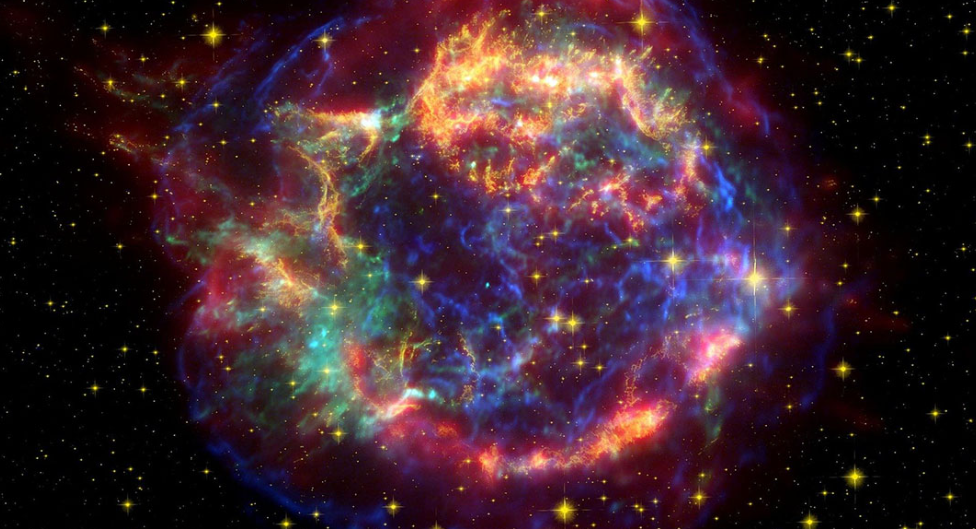By Jonathan Ram, Year 13
What is the brightest thing that you can imagine? A lightbulb? Fireworks? Maybe it’s the sunlight when you open the blinds in your room after a good night’s sleep (it happens to us all). Well, I’d like to introduce (or remind) you about supernovae, some of the brightest and most violent events in the whole of the known universe!
To understand a supernova, we first need to know where they come from and how they happen. A supernova is one of the phases in the life-cycle of a star: massive explosions that are caused by some of the simplest laws of physics.
The simplified life-cycle of a star goes as follows. First, stars are ‘born’ in stellar nebulae –which are just big collections of dust and matter. Depending on the size of the star, it can be classified as ‘normal’ or ‘massive’. The larger the star is, the shorter it will live as it will burn through its fuel much quicker than a smaller counterpart. The main part of a star’s life-cycle is fittingly named the ‘main sequence’ phase, and it is when hydrogen nuclei are fused, or joined together, under the extreme temperatures within the star, producing helium. This fusion process releases a lot of energy and it is what sustains the star’s life for multiple billion years. However, once a massive star runs out of hydrogen for fuel, it will begin to expand extremely large in size and cool down drastically, forming a “red supergiant.”
Red supergiants are the largest stars ever known– some of them grow to hundreds of times the diameter of our own sun, making them true titans of the universe. Unfortunately, all great things (including stars) come to an end at some point. Once a red supergiant runs out of fuel, the balance between the energy released from fusion and the force of its own gravity is disturbed, and the star will begin to rapidly collapse due to the immense gravitational pull. This ‘core collapse’ is what will then spark an unimaginably big explosion: a supernova. A supernova leaves behind either a ‘neutron star’ or a black hole depending on the size of the collapsing star. Supernovae are so bright and release so much energy that they can cause the fusion of heavy elements (anything bigger than iron), which cannot happen in smaller stars. This makes them major sources of many rare earth metals such as platinum, gold, and silver.
If you compare the amount of energy released by a single supernova explosion to the biggest explosions that ever occurred on earth, some truly astonishing figures are found. The average supernova can create a blast with an energy of 1028 megatons of TNT equivalent, which is an absolutely colossal amount. For comparison, the largest nuclear warhead ever detonated, the tsar bomba, had a blast of just 50 megatons of TNT, and the nuclear warheads dropped on Hiroshima and Nagasaki had a blast power of 15 and 25 kilotons (0.015 and 0.025 megatons) respectively. A mind-blowing cosmic event and the vibrant last dance of a dying star, supernovae are truly a super explosion.



